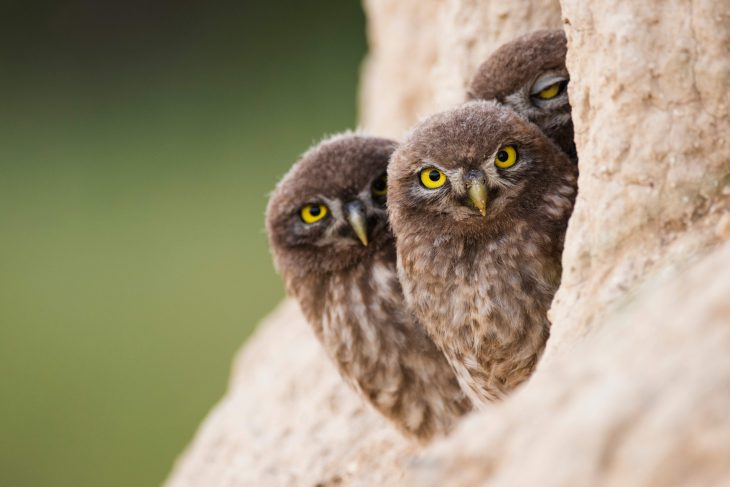
You can find different types of owls lurking in the snowy tundras of Alaska to the crowded rainforests of Southeast Asia. Each owl breed variety becomes a necessary predator to their respective environments. They prevent infestations of small animals, such as rodents, moths, and fish. All the different types of owl breeds in the world are unique, with their own distinct physical features. Some owls have long tails, while another type of owl breed would have no tail at all. Their most prominent characteristics such as their large eyes and feather patterns make them attractive animals for photography. Despite so, many wildlife photographers find it difficult to take pictures of them for three major reasons: they are nocturnal, antisocial, and experts at camouflage.
Professionals aren’t the only ones fascinated by these animals. Many people find owls adorable, majestic, and admirable. You can easily find discussions about owls and their mysterious behaviors on the internet. Social media users have also expressed interest in owls. TikTok user “Fraheese” once posted a viral video of a large owl walking about. This sparked an intense discussion in the comments section about owls and the lack of knowledge surrounding their characteristics. This particular public reaction is normal, as most people know only about the physical appearance of owls and not much else. This makes them mysterious enough to entice us to learn more about owls.
Some people search for the largest owl species or the different owl colors after coming across a unique owl they had never seen before. But you could also love owls despite never actually seeing one. Learning about these birds is a great way to appreciate their importance in our ecosystem and you would know how to react if you come across one. There are over 250 owl species in the world, but we’ll begin with just a few popular owl names to jumpstart you on your journey in learning about these wide-eyed wonders.
Origins of Owls
The oldest fossil record of the owls has been dated around 60 million years ago. It was when dinosaurs went extinct that birds experienced rapid evolution. Taxonomists and researchers alike believe that most birds come from a singular taxonomic group called Neoaves, including the owls.
Ancient Greeks associated owls with Athena, the goddess of war, logic, and handicrafts. They believed that the appearance of an owl ensured victory during a battle. Meanwhile, Native Americans associated owls with death and the afterlife, believing that owls were departed loved ones or had ties with spiritual entities.
Surprisingly, owls evolved to become top predators in the wild despite their friendly appearance. They are silent flyers with eyes designed to create full focus and depth perception. Their asymmetrical ears are also used to track the exact locations of sounds being made. Their necks can rotate at 270 degrees with the help of a blood pooling system that controls their eyesight and brain when doing so.
Now that we know the general background of owls, we can start learning about specific types of owls. Here we have organized five different categories: the dangerous types, the adorable types, the rarest types, and the beautiful types. Included in this list are their preferred habitat, their unique physical traits, their behaviors, and even some entrancing images of them.
Most Dangerous Types of Owls
Are owls dangerous? Owls from popular media such as Hedwig from Harry Potter and Owl from Winnie the Pooh might lead you to believe they are warm creatures. But real owls are far more fearsome than your usual birds. Their large eyes and attractive features may have you disarmed, but never forget that they are still considered great predators and are extremely territorial.
Great Horned Owl

The owls of North America are wide in variety but the most dangerous of them all is the great horned owl. These mottled gray-brown birds have thick bodies and two large feathered tufts on their heads. In terms of owl size, the horned great owl is the largest of its species within its territory.
Great horned owls have an average wingspan of 200 centimeters and stand as tall as 60 centimeters. We can find them all across North America preying on birds, rodents, and even larger animals. The clutch force of a great horned owl is similar to the bite force of a large guard dog. These owls focus their attacks on the face and head when attacking larger animals to blind, disfigure, and even kill their prey.
The great horned owl is also aggressive and territorial. Residents of Seattle had reported consecutive attacks by a great horned owl from a nearby park in 2012. These attacks were unprovoked, just like the 2015 Salem, Oregon attacks where a jogger was repeatedly struck on the scalp by a great horned owl out of the blue.
Barred Owl
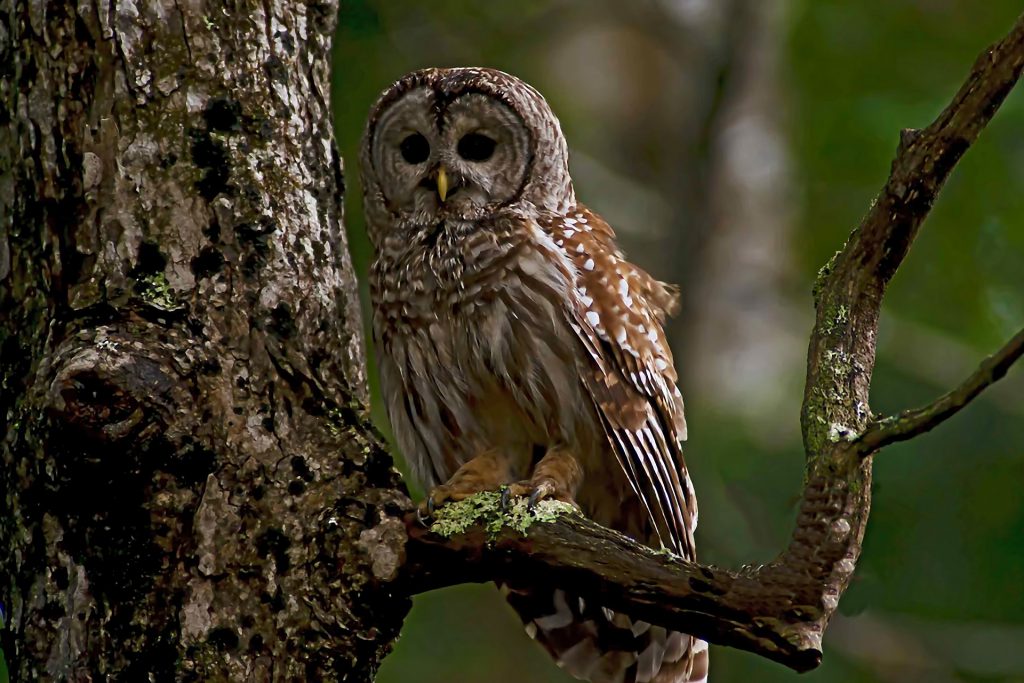
Barred owls are the next type of owls you should avoid. It’s best to stay away from their habitats found east of the United States and the southeast of Canada. They are smaller compared to great horned owls but can be a real threat. A barred owl can reach a maximum weight of 800 grams and a wingspan of 110 centimeters.
You can spot a barred owl by its mottled brown and white colors and black eyes. They have vertical brown markings and an upper breast crossed with horizontal brown colors. It is possible to hear a barred owl hooting, unlike most owls. And just like the rest, they keep a nocturnal hunting pattern.
Many hikers have reported being attacked by barred owls around Texas to British Columbia. This has a lot to do with their territorial and antisocial behavior. However, there is one particular barred owl that could’ve committed actual murder. In 2003, a man from North Carolina was accused of murdering his wife with a fireplace blow poke. Fast forward eight years later, a barred owl was reported to be terrorizing the Pacific Northwest, causing wounds similar to the wife’s injuries. This prompted a reexamination of the case, with the suspicion that the barred owl could have, in fact, caused the wife’s death instead.
Snowy Owl
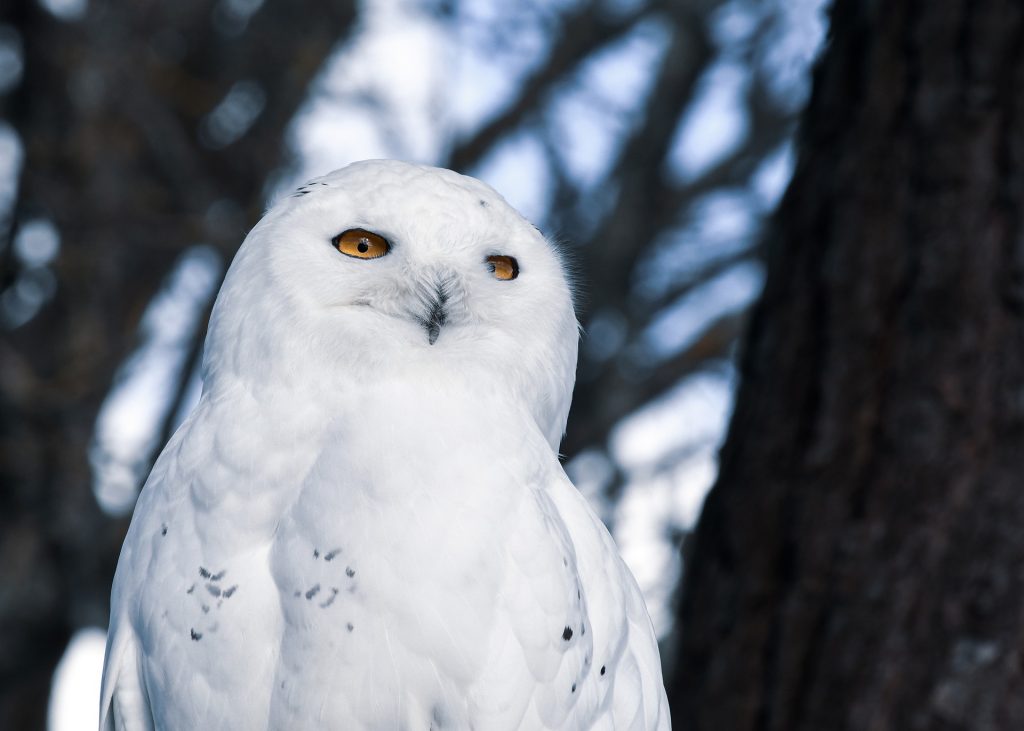
The snowy owl is one of the most beautiful owls in existence, but they are also one of the most dangerous. Snowy owls are white owls that camouflage well around snow-trodden areas. You can usually find them around arctic tundras. However, winter in some areas has spotted these snowy owls visiting lakes, oceans, fields, and airport landing strips.
The male snowy owl is a pure white owl compared to its female counterpart, which has black patterns on its back. However, both the male and female snowy owls have white faces, rounded heads, and yellow eyes.
Just like most owls, the snowy owl is extremely protective of its domain. But unlike other owls, they become increasingly aggressive during the breeding season. Reports of snowy owl attacks against humans are quite common during this time. They are known to dive-bomb on an unsuspecting human’s head. They are also brave against arctic wolves where there are reports of them battling against the larger species.
Rarest Types of Owls
Owls that belong to the rarest types of owls have either resurfaced after a century or are in danger of extinction. If you realize that you have recently spotted an owl under this list, contact a nearby wildlife reserve to protect them from further threats like poaching and deforestation.
Blakiston’s Fish Owl

The Blakiston’s fish owl is one of the rarest types of owls and the largest owl in the world. This large brown owl can reach a maximum of 6 feet in wingspan and 2 feet in height. You can find these marvelous birds around mature boreal forests in Japan and Russia.
The Blakiston’s fish owl consumes salmon, pike fish, catfish, and even frogs. Fishes caught by a Blakiston’s fish owl can even be two or three times their size. The Blakiston’s fish owls are also known to sing in pairs. The deep-toned song only has three notes, with two coming from a male and one coming from a female.
Jonathan Slaught, the leading expert in Blakiston’s fish owl, conducts his research in the Russian forests where the owl co-habits with the Ussuri brown bear, Amur leopard, Asiatic black bear, and the Amur tiger. According to the IUCN Red List, there are now only 1,500 to 3,700 Blakiston’s fish owls in the world. Slaught and his partner, Ornithologist Surmach, have been battling the possible extinction of the Blakiston’s fish owl for years. Their solution? Creating more parks available for the owl.
Rajah Scops Owl
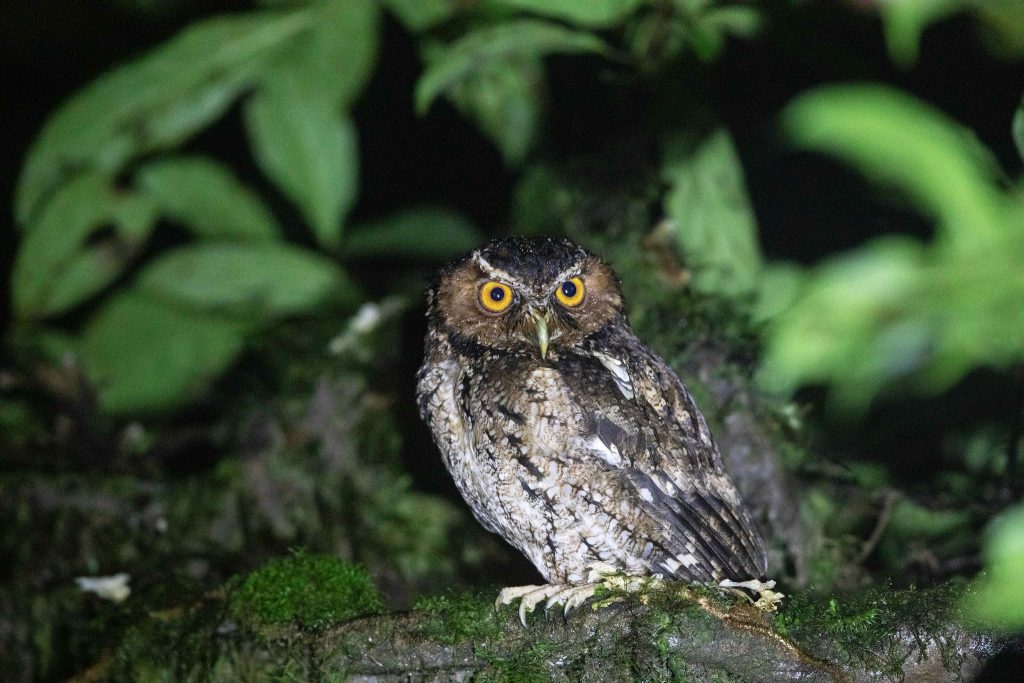
The Rajah scops owl, also known as the Otus brookii brookii, lives in the forests of Mount Kinabalu in Malaysia. Scientists last observed the owl in the year 1892. Hence, people assumed the Bornean subspecies were extinct, only for them to reappear more than a hundred years later.
Ornithologists have little knowledge regarding the Rajah scops owl. There has been no known captured Rajah scops owl to date. This also means there is no genetic study, no known core habitats, and no recorded sounds of the Rajah scops owl.
While scientists agree that there should be movements in conserving the species, they have no clue on where to find them or how to protect them. After Smithsonian Migratory Bird Center’s Andy Boyce took his photograph in 2021, the Rajah scops owl disappeared once again.
Moheli Scops Owl
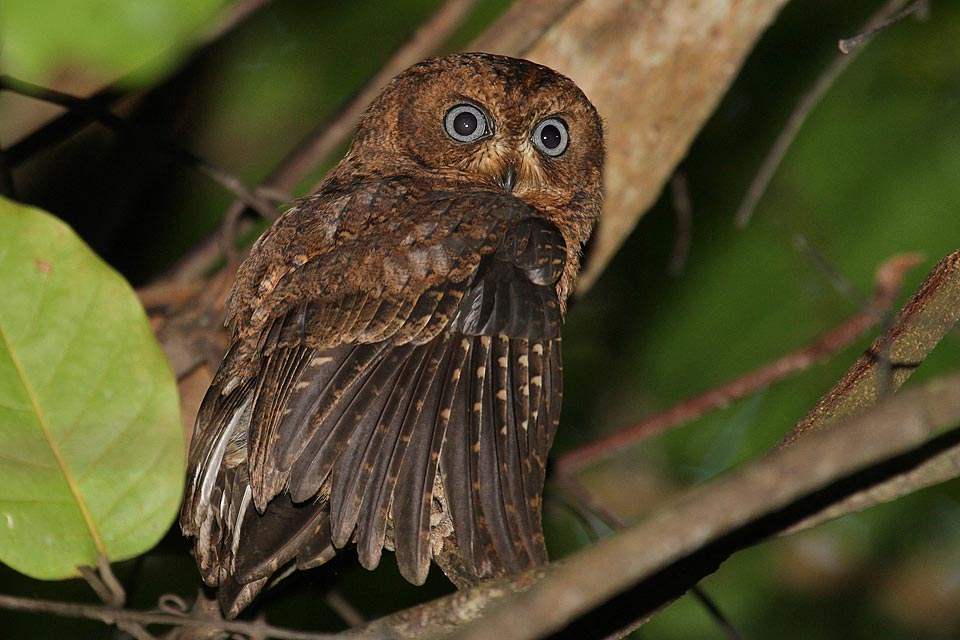
You will only find the Moheli scops owl in Moheli, Comoro Islands. These owls have red to brown plumage and black streaks or bars. Unlike the Rajah scops owl, the Moheli scops owl has a recorded sound comprised of screeches and whistles in a pattern of five notes.
Moheli scops owls inhabit the highest point of Moheli island’s mountain, around 2,590 feet. They prefer humid forests rich in epiphytes, which grow on plant surfaces. These owls are active only after sunset. Ornithologists have discovered that their mating season occurs around September.
Unfortunately, the habitat of the Moheli scops owl has been experiencing deforestation. As of 1995, only five percent of the island remains suitable for the Moheli scops owl. Today, the mountain forest remains unprotected. As a result, the Moheli scops owl faces extinction.
Most Adorable Types of Owls
Owls with cute features such as wide eyes, small sizes, or fluffy bodies are wide in variety. In this category, we discuss some of the most adorable types of owls you can find in the wild. Before we dive in, however, you must keep in mind that no matter how friendly they may seem, owls are vicious against people invading their space.
Eurasian Pygmy Owl
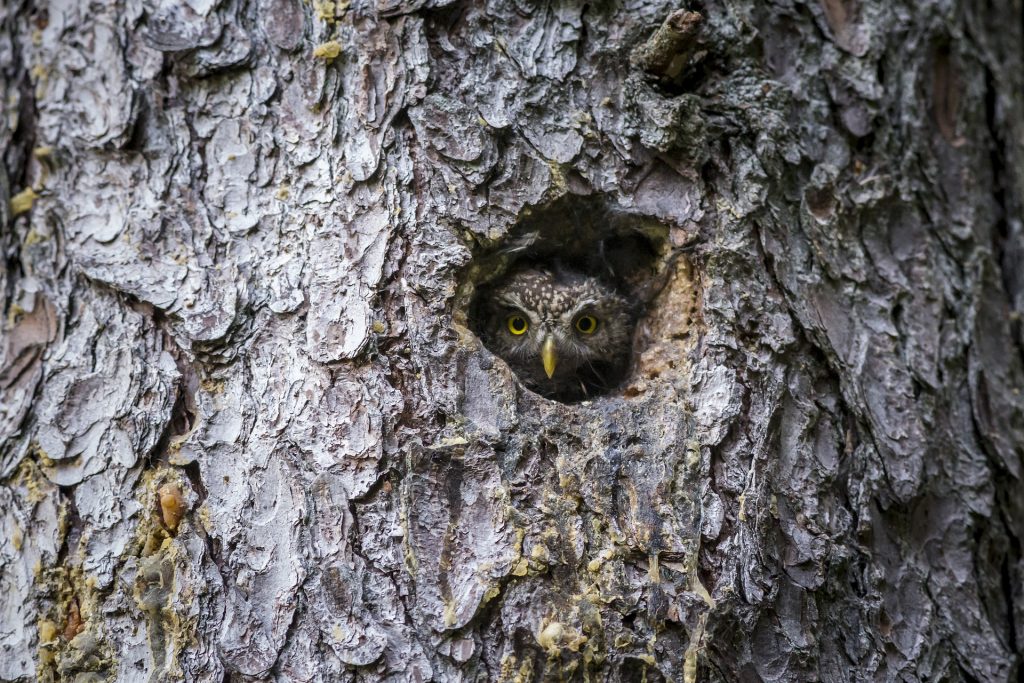
The Eurasian pygmy owl is the smallest owl in Europe. This sweet-looking owl has large yellow eyes and keeps warm with its pale greyish-brown feathers. The Eurasian pygmy owl can reach a maximum of 19 centimeters lengthwise with a maximum wingspan of 110 millimeters. This makes the Eurasian pygmy owl smaller than the average owl size. If you plan on searching for these owls, you can only spot them within the coniferous forests or on high mountain ranges in Central or Northern Europe.
Unlike most owls, the Eurasian pygmy owl is mostly active during dusk and dawn. They occasionally remain active in the daytime as well and can rarely be seen awake during the evening.
What makes the Eurasian pygmy owls adorable is their expressive nature. They show their excitement when they cock their tail and flick it side-to-side. When frightened, the Eurasian pygmy owls squeeze themselves on their upright body. Meanwhile, an angry Eurasian pygmy owl would raise their feathers at you.
Spotted Owlet
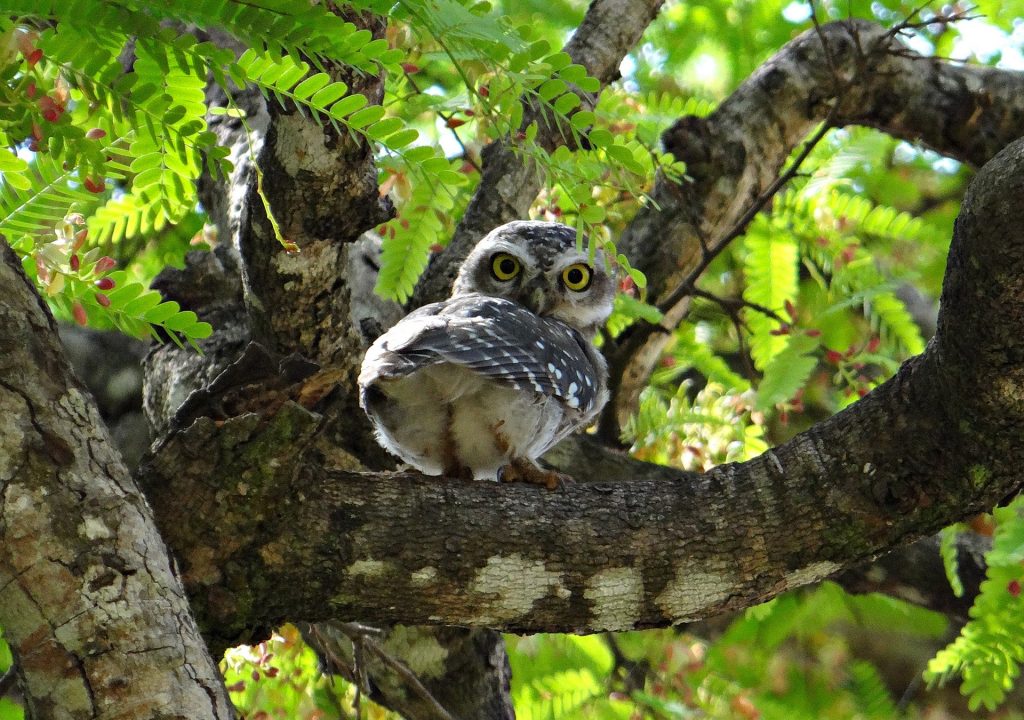
Next on our list of adorable types of owls is the spotted owlet. These owls have creamy-buff colors and brown concentric lines. Their wings have banded white colors and their tails have white bars on them.
You can find the spotted owlets in the Indian subcontinent, Southeast Asia, Iran, and Vietnam. They do not exist in Sri Lanka and the peninsulas of Thailand and Malaysia. They prefer open or semi-open countries with a few deserts. Contrary to other owls, the spotted owlet isn’t comfortable in thick forests, instead, they like to live in village outskirts, ruins, and old trees.
Spotted owlets have a cute physical appearance because of their smooth round heads and short tail. They are also more familiar with humans compared to other owl species. Some people believe that the call of a spotted owlet is a bad omen.
Little Owl
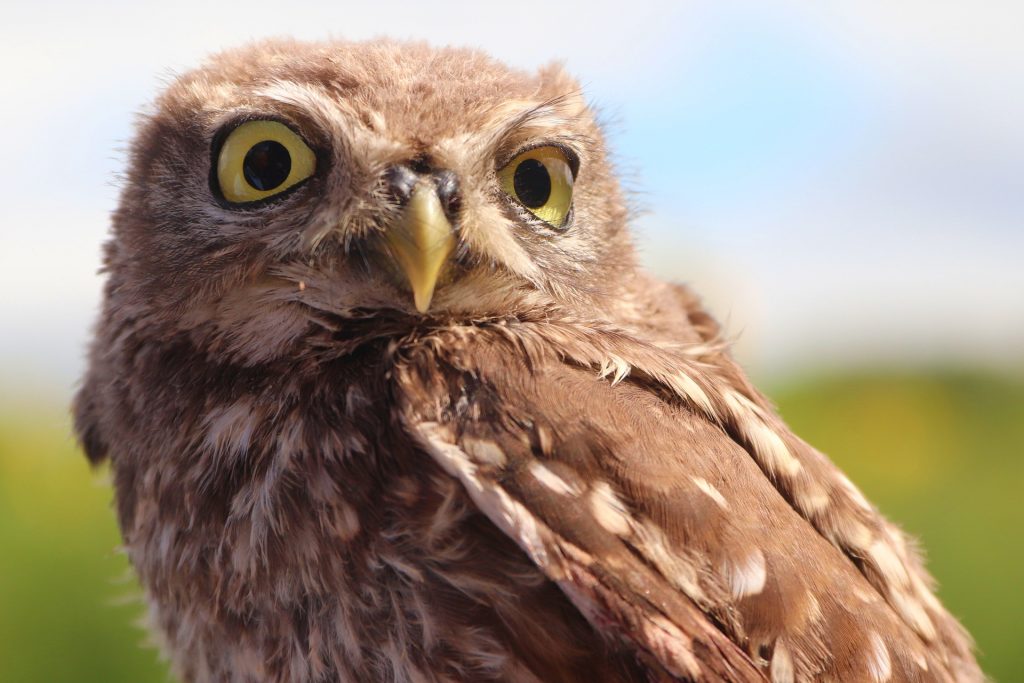
The little owl, also known as the owl of Athena or the owl of Minerva, is a tiny owl that you can find in Europe, North Africa, east of the Palearctic, and Korea. Their association with the goddesses makes them a representation of knowledge, wisdom, and insight.
Little owls nest in hollow tree trunks comfortably because of their small height. These owls reach an average of 22 centimeters in length with a wingspan of 56 centimeters. They are also very light, weighing only 180 grams.
Little owls are adorable because of their large yellow eyes, flat-topped heads, and plum bodies accompanied by short tails. The spotted patterns of white and brown turn mostly white around their eyes. This makes them look consistently angry or surprised.
Types of Owls That Can be Trained
Owls are not suitable as house pets. It is also illegal in the United States to domesticate an owl. Only professionals such as zookeepers and ornithologists may look after these types of owls. Despite so, there are still more flexible owl varieties compared to their more violent breeds.
Eurasian Eagle Owl
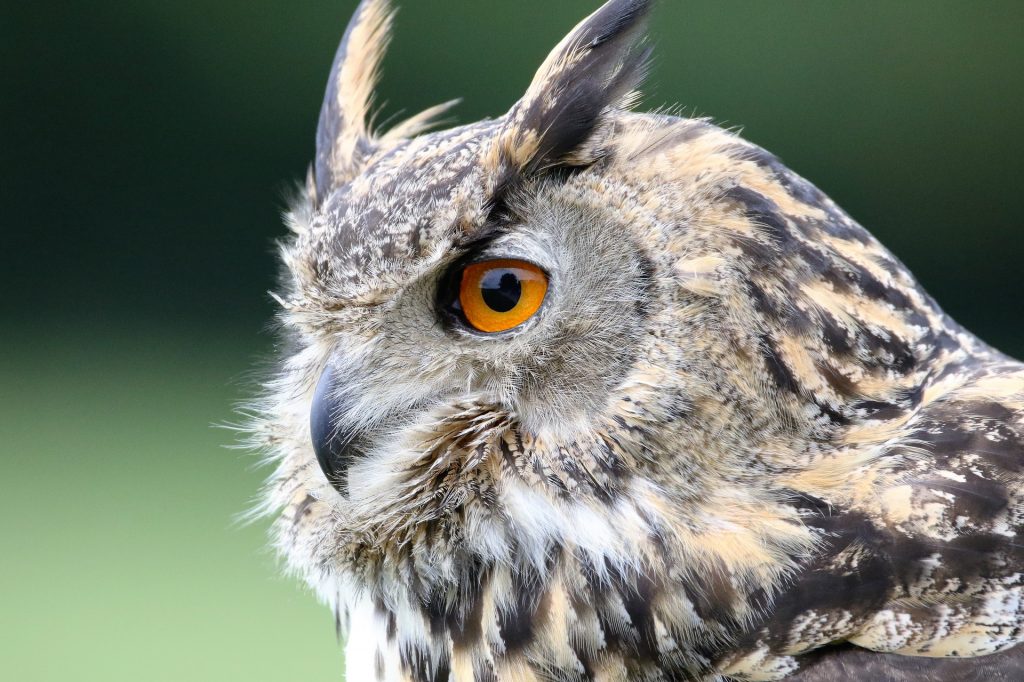
The Eurasian eagle-owl is one of the big owls that humans can train. They are fast fliers and fly updraft the way a red-tailed hawk or soaring hawk would, hence their name. Eurasian eagle-owls are also one of the largest owls in the world. They can reach a maximum height of 75 centimeters and a wingspan of 188 centimeters.
Eurasian eagle-owls have bright orange eyes with long ear tufts with speckled black-brown feathers. You can find them around wooded habitats, cliffs, and rocky outcrops. They also thrive in open habitats like farmlands, grasslands, semi-arid areas, and steppes.
Eurasian eagle-owls are the most available exotic owl that you can own in the United States in certain states. While there are records of these owls bonding with human trainers better than other types of owls, the Eurasian eagle-owl is also known to be quite picky with who they trust.
Oriental Bay Owl
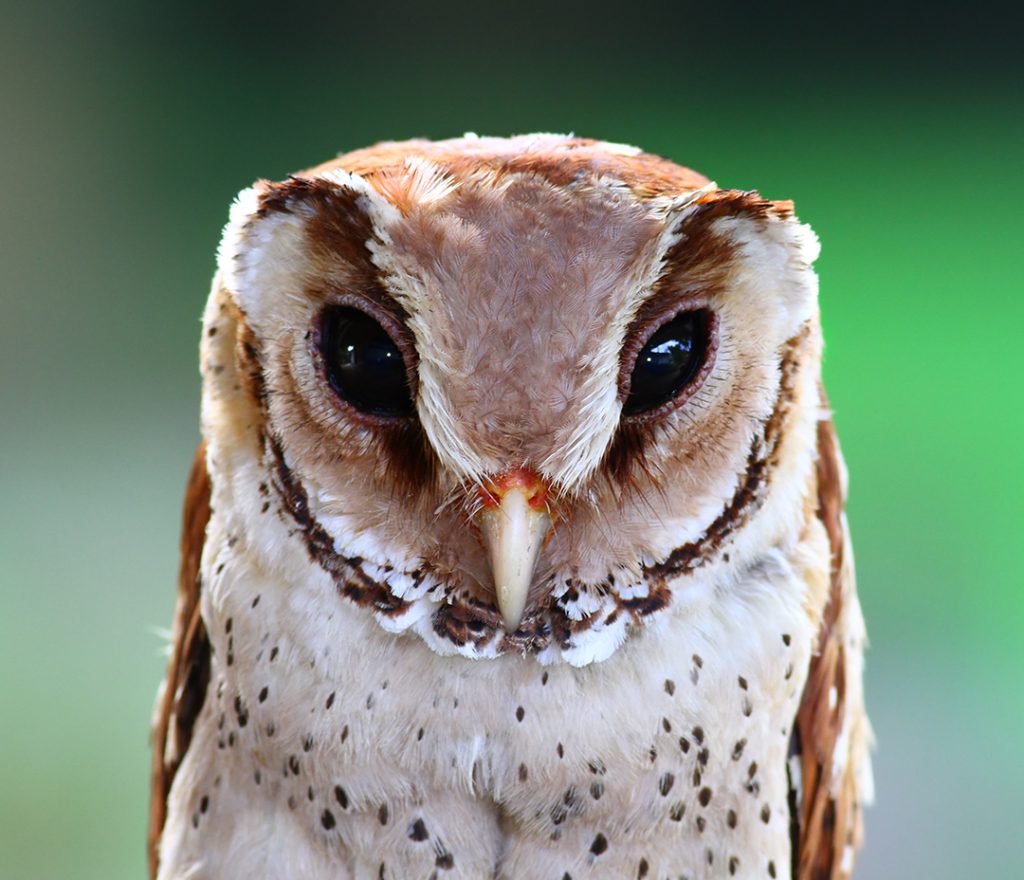
Oriental bay owls, also known as the Asia bay owl, live in Southeast Asia. They have large black eyes, brown and white feathers with black and white spots. Oriental bay owls are unique for their highly angular head and upright posture. They can reach a maximum height of 29 centimeters with a wingspan of 237 millimeters.
Oriental bay owls were once endemic in Samar, Philippines. The Phodilus badius riverae was theorized to be a unique subspecies of Oriental bay owls. Unfortunately, taxonomists will never know because of the bomb raids that occurred during World War 2.
Unlike most owls, you can approach a sleeping oriental bay owl when they are fast asleep. Wildlife photographers also note that most oriental bay owls can be found roosting at heights of 6.5 feet to 16 feet only, making it easy to take snapshots of the sleeping owl.
Mountain Scops Owl
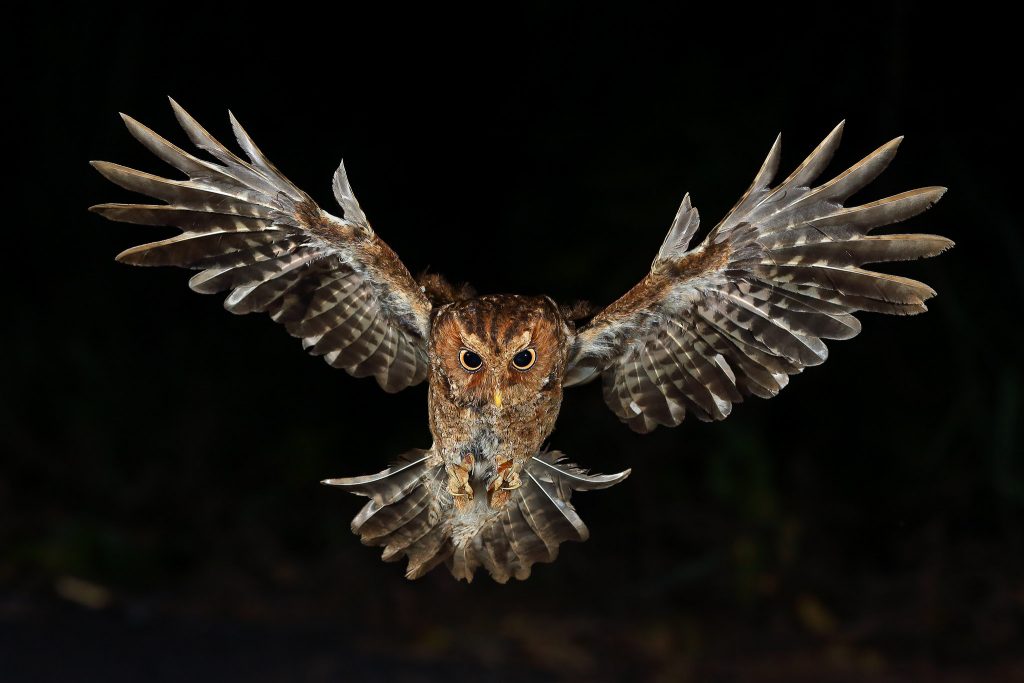
The mountain scops owl is the last of our types of owls that can be domesticated. These owls are small, with large yellow eyes and brown with prominent white stripes. They can reach a maximum length of 20 centimeters and a wingspan of 152 millimeters.
You can find the mountain scops owl in Pakistan, Himalayas, East India, Sikkim, Burma, China, Taiwan, Nepal, Borneo, Sumatra, the Malay Peninsula, and the Southeast to South Asia. They thrive in areas filled with oak, pine, and chestnut trees, as well as humid forests and montane rainforests with tropical climates.
Mountain scops owls fit in the palm of your hand. There are online sellers for the mountain scops owl with prices ranging from $500 to $1,000. However, since owls are wild by nature, the mountain scops owl should be watched closely when out of its cage. Well, since the owl will likely escape.
Most Beautiful Types of Owls
All owls are beautiful. However, certain types of owls stand out with their grace and their feathers. These types of owls have unique features that make them noticeable and adored by many.
Barn Owl

Barn owls are the types of owls in Texas you would find all year round. They have a pure white face, belly, and chest with light golden brown textures. Barn owls reach a maximum height of 20 inches, with a wingspan reaching 4 feet.
It is easy to spot a barn owl since they thrive in open areas such as farmlands, clearings, and forest edges. Barn owls prefer to roost in crevices, tree cavities, riverbanks, and of course, barns.
You might recognize barn owls from the popular Guardians of Ga’Hoole franchise, which features the barn owl named Soren. Sirius Black of the Harry Potter series also owned a barn owl as his messenger bird and pet.
Ural Owl
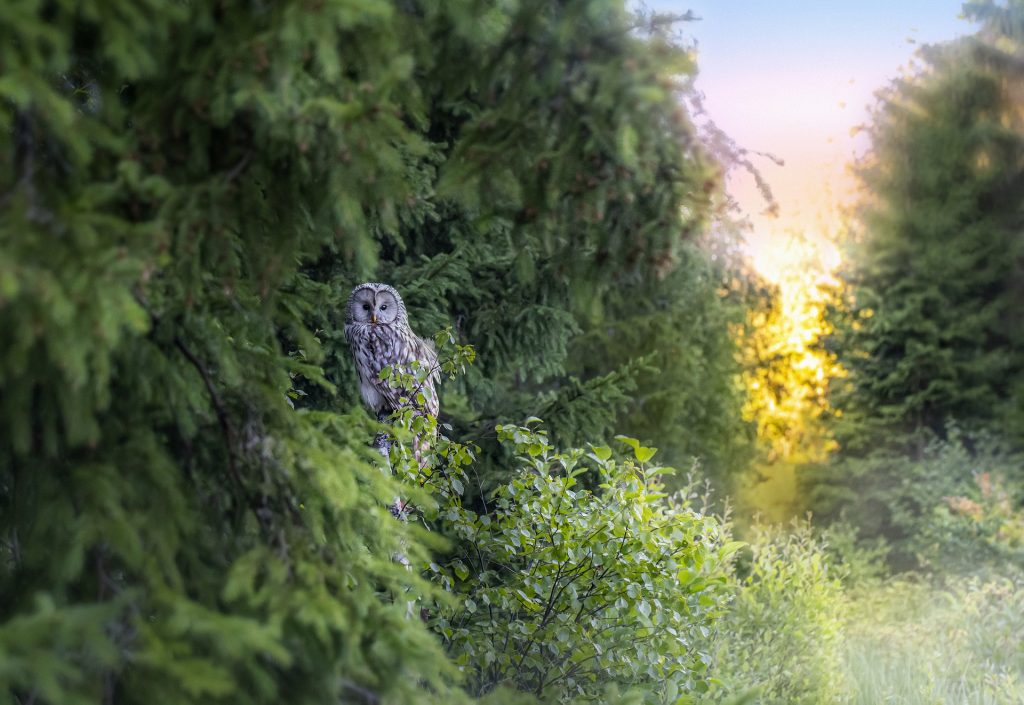
You can find Ural owls in cold regions within coniferous and mixed forests, nearby bogs, and clearings. It is a large owl with small black eyes, with pallid and grayish features. Ornithologists usually spot them by their patterned feathers, round head, and uniquely long tail.
Ural owls can reach a maximum of 62 centimeters and a wingspan of 134 centimeters. It was first sighted in the Ural Mountains of Russia, hence its name. However, you can also find the Ural owls in Japan.
Ural owls are currently decreasing for three reasons. The first one is the removal of hollow and broken trees from forests, where they prefer nesting on. The second cause is artificial objects such as live wires that electrocute unsuspecting Ural owls. The third is human expansion, which causes Ural owls to collide with glass buildings and even automobiles.
Black-and-White Owl
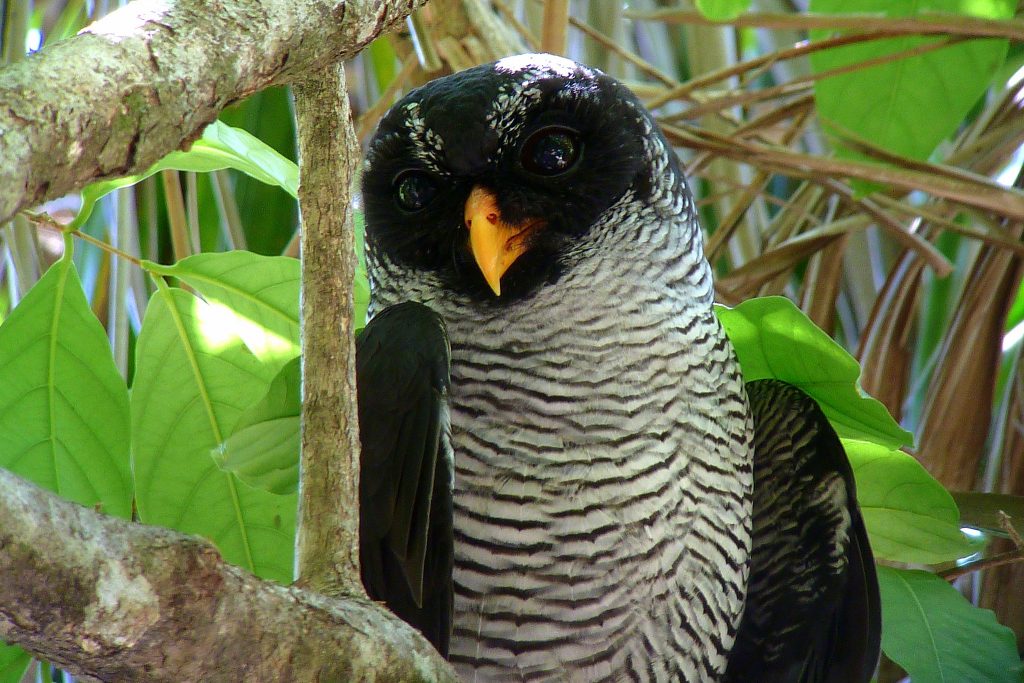
The black-and-white owl belongs to a few black owls that exist in the world. You can easily spot a black-and-white owl because of its white feathers with black stripes, bright orange to yellow bills, and deep dark eyes.
Black-and-white owls can reach a maximum length of 40 centimeters with wingspans reaching 293 millimeters. They roost in foliage or branches near to the trunk above ground.
You can find them in Venezuela, Ecuador, Colombia, Mexico, and Peru. You can also possibly find a black-and-white owl near villages.
The IUCN’s Red List declares the black-and-white owls as least concern. However, there has been a recent decrease in their population. In the last century, Mexico’s black-and-white owls have decreased by 50%. The cause of their decrease in population is habitat loss, with their wetland and forest areas turning into agricultural lands.
Conclusion
We hope you enjoyed learning about the different types of owls. Don’t worry if you didn’t find a specific owl you are looking for, as there are still over 200 more owls ready for you to discover! Unfortunately, because of deforestation and urbanization, many owls have lost their homes. That is why spreading awareness about their necessity in our world is important so we could make more future discoveries about them. Who knows, maybe one day we’ll even learn about a new type of owl in existence.
Was this page helpful?
Our commitment to delivering trustworthy and engaging content is at the heart of what we do. Each fact on our site is contributed by real users like you, bringing a wealth of diverse insights and information. To ensure the highest standards of accuracy and reliability, our dedicated editors meticulously review each submission. This process guarantees that the facts we share are not only fascinating but also credible. Trust in our commitment to quality and authenticity as you explore and learn with us.


